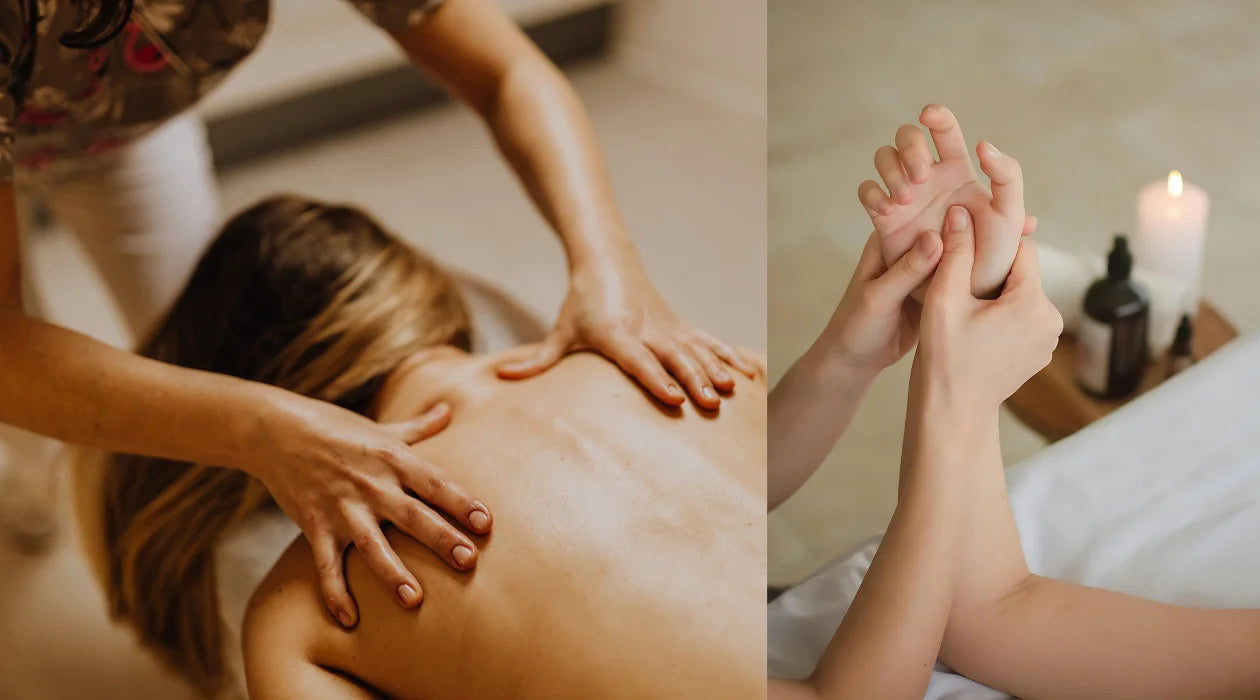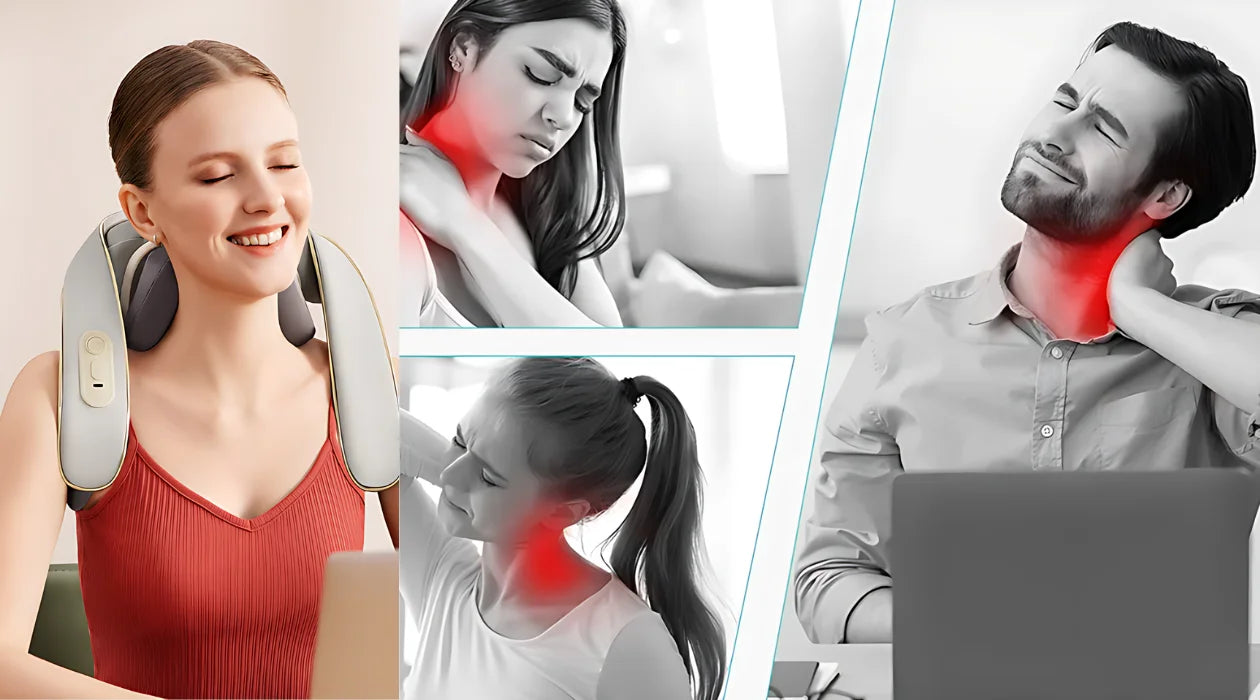Back pain is a common problem that is often caused by poor posture, especially in today's society. Many people sit at their desks for long periods of time and don't get enough exercise. This article will explore the symptoms of back pain and its causes to help you understand how poor posture can affect your health and how to reduce these effects.
What is Bad Posture?

Bad posture refers to posture that places undue stress on the body's muscles, ligaments, and joints. It usually occurs when the spine is misaligned or the body's natural curves are exaggerated. Maintaining bad posture for a long time can lead to a variety of health problems, including chronic pain, muscle fatigue, and even structural deformities.
Types of Bad Posture
Understanding various bad postures can help us take targeted measures.
Forward Head Posture
This occurs when the head protrudes forward from the spinal line, often caused by long periods of screen time or sleeping in an incorrect position. This posture puts undue stress on the neck and upper back muscles, causing discomfort and pain.
Rounded Shoulders
When the shoulders roll forward, a hunched appearance is formed, which is called rounded shoulders. It is commonly seen in people who sit at a desk for long periods of time without proper ergonomic support. Rounded shoulders can cause muscle tension and pain in the upper back and shoulders.
Kyphosis
This condition involves excessive curvature of the upper spine, often caused by long-term poor posture or a condition such as osteoporosis. It can cause back pain, stiffness, and difficulty standing upright.
Stooping
Stooping can cause the chest to collapse and the upper back to round. This is a common posture for those who sit for long periods of time without adequate support. This posture can cause lower back pain and muscle fatigue.
Anterior Pelvic Tilt
This occurs when the pelvis tilts forward, causing an exaggerated curve in the lower back. This is often caused by long periods of sitting and weak core muscles. This posture can cause lower back pain and hip discomfort.
Physical Symptoms
Bad posture can manifest itself in a variety of physical symptoms that can be painful. Knowing these symptoms can help you correct bad posture in a timely manner.
Neck Pain
Looking down at a screen for long periods of time and sitting incorrectly can cause our heads to tilt forward unconsciously. When the head tilts forward from the spine, this puts extra pressure on the neck muscles and ligaments. This can cause neck pain.
Shoulder Pain
Shoulder pain is often caused by hunched or rounded shoulders. Sitting at a desk for long periods of time and working in an incorrect posture. This can cause muscle tension and high pressure in the shoulders. The range of motion is limited.
Upper, Middle, and Lower Back Pain
Back pain can be systemic or localized, and poor spinal alignment can cause hunched backs, lumbar hyperextension, or flat backs. Leading to muscle spasms, potential disc problems, and chronic discomfort.
Side Waist Muscle Stiffness
Sitting or standing with poor posture for long periods of time can cause back stiffness and reduced flexibility. Over time, this can make it difficult to bend, stretch, and perform daily tasks.
Muscle Spasms
Muscle cramps are sudden, involuntary contractions that are usually caused by muscle imbalances due to poor posture.
Headaches
Tension headaches can be caused by tight neck and upper back muscles due to poor posture, such as forward head tilt. Persistent headaches can lead to migraines.
Nerve Compression
Poor posture can lead to nerve compression, which can cause tingling, numbness, or pain. Spinal misalignment can put pressure on nerves, leading to decreased sensation and muscle weakness. Chiropractic care, physical therapy, and maintaining proper posture can help relieve nerve compression.
How To Relieve Back Pain
Exercise Regularly
Regular exercise can improve back condition. Exercises such as yoga or Pilates can improve flexibility and relieve muscle tension.
Use a Massager
You may consider using a massager to help treat back pain, such as a lower back massager or a neck and shoulder massager, which can provide targeted relief for lower back pain. Massagers can relieve muscle tension, improve blood flow, and reduce pain.
learn more:7 Ways to Relieve Lower Back Pain

How To Improve Poor Posture
Improving bad posture requires a conscious adjustment to your daily habits. Here are a few ways to correct and maintain good posture.
Pay Attention To Your Posture
The first step to improving your posture is to become more aware. Observe how you sit, stand, and move throughout the day. As soon as you notice yourself slouching, make a conscious effort to correct it.
Maintain a Proper Work Posture
Sit with your back straight and shoulders relaxed. Keep your elbows close to your body and your feet flat on the floor.
Try to avoid hunching over and keep your spine as straight as possible. When lifting objects, bend and straighten your knees instead of your waist. Also, be sure to move your hips when twisting from side to side to prevent unnecessary pressure on your back.
Get a Proper Chair
If your job requires long periods of sitting, you can switch to an ergonomic chair that supports the natural curve formed by your back. Your feet should be flat on the ground. Position your computer screen at eye level to prevent your head from leaning forward.
Sit in Different Positions Frequently
Avoid sitting in one position for long periods of time. Alternating between sitting and standing, and shifting your weight regularly, can prevent stiffness and muscle fatigue.
Use Posture Correction Devices
Consider using a posture corrector or wearable device to remind you to maintain proper posture. These tools can provide extra support and help you develop better posture habits.
How To Tell If Back Pain Needs Medical Attention?
Most back pain can be resolved with improved posture and regular exercise, usually improving gradually over a few weeks.
If your back pain is severe, does not improve with rest, or lasts for more than a few weeks, be sure to consult a doctor.
- Numbness or tingling: Leg or arm pain accompanied by numbness, tingling, or weakness may indicate a pinched nerve or other nervous system problem.
- Loss of bladder or bowel control: Sudden loss of control of bladder or bowel function may be a sign of cauda equina syndrome, a serious condition that requires immediate medical attention.
- Fever or unexplained weight loss: Back pain accompanied by fever, unexplained weight loss, or other systemic symptoms may indicate an infection or other serious problem.
- Trauma: If your back pain is the result of an accident, fall, or other injury, seek medical evaluation to rule out fractures or other injuries.
Conclusion
Improving bad posture requires sustained effort and deliberate practice. By incorporating regular exercise, ergonomic adjustments, and posture correction into your daily life, you can reduce pain, increase flexibility, and enhance your overall health. If you have any concerns about the severity of your back pain, you can consult a healthcare professional for guidance.
If you're looking for back pain relief or treatment through massage, you can visit SKG Massagers. The SKG brand holds thousands of patents, has been recommended by hundreds of media outlets, is loved by millions of satisfied users, and has even been endorsed by Meyer Musk.




